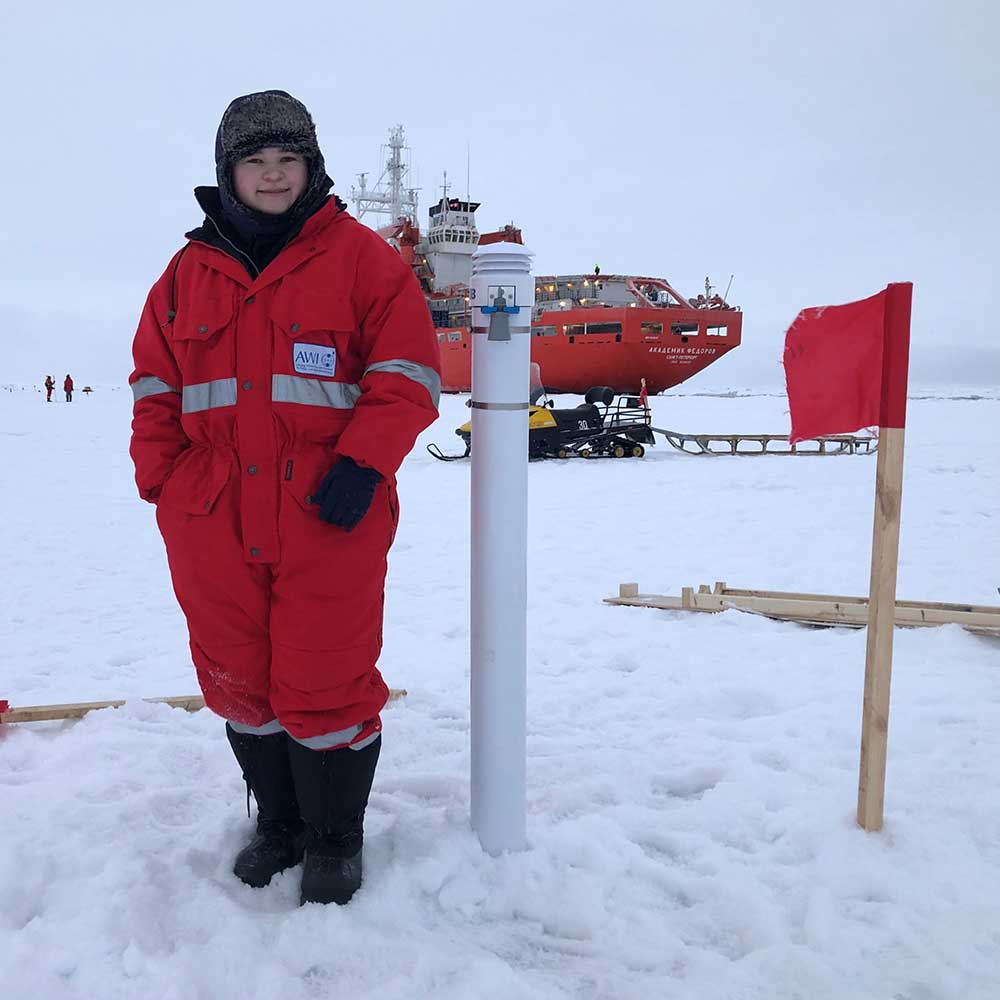Meet a Participant: Ryleigh Moore

Applied mathematician analyzes storm surge data during summer internship
“The quantification of storm surge is vital for flood hazard assessment in coastal communities affected by coastal storms,” said Ryleigh Moore, recent participant in the National Science Foundation (NSF) Mathematical Sciences Graduate Internship (MSGI) Research Participation Program.
“The astronomical tide is an integral component of the total still water level needed for accurate storm surge estimates,” she said. “This gives us the ability to predict and better understand the tide which can help with storm warnings and keep people safer from flooding dangers.”
The NSF MSGI Program provides research opportunities for mathematical sciences doctoral students, allowing them to participate in internships at national laboratories, industries and other facilities. NSF MSGI seeks to provide hands-on experience for the use of mathematics in a nonacademic setting.
An extremely driven student with a passion for learning, Moore graduated Summa Cum Laude from Boise State University (BSU) with a double major in pure and applied mathematics and a minor in computer science in only three years’ time.
While earning her bachelor’s degrees at BSU, Moore solidified her passion to become a mathematician and was accepted into the University of Utah (U of U) math Ph.D. program where she is currently in her fourth year of study researching the development of numerical methods for high dimensional stochastic differential equations.
Upon hearing about the NSF MSGI Program from fellow graduate students at the U of U who had participated in the program the previous year, Moore took advantage of the opportunity to learn more about what it could be like to work in a non-academic setting by applying for and eventually being accepted into the internship.
Under the mentorship of Marissa J. Torres, research general engineer with the Engineer Research and Development Center (ERDC) at Cold Regions Research and Engineering Laboratory (CRREL), Moore spent the summer contributing research focused on improving the tidal height estimates from the Advanced Circulation (ADCIRC) hydrodynamic model.
While ADCIRC is capable of estimating tidal heights nearshore, the model is limited in its ability to resolve more complex components of the tides than actually exist in nature. Moore’s research objective during her internship was to incorporate critical tidal frequencies that affect inter-annual seasonal variability in the tidal signal.
There were three main tasks that Moore and Torres identified for her to pursue in her research project.
The first was to characterize the tidal composition of tidal predictions from the National Oceanic and Atmospheric Administration (NOAA) Center for Operational Oceanographic Products and Services (CO-OPS) network with corresponding properties such as latitude, longitude, station location and date utilizing existing tidal harmonic analysis methods.
The second task was to identify key tidal components that can be added to the ADCIRC tidal predictions during post-processing.
Moore’s third task during her appointment required developing a correction factor that is a function of the tidal properties identified in the first task where the input is raw ADCIRC tidal height estimates and the output is corrected ADCIRC estimates.
Moore’s analysis of tidal height estimates concluded that the length of predictions analyzed using UTide, a MATLAB function designed specifically to assist in analyzing tidal data, had a fairly significant impact on the components identified as part of the tidal signal.
She also determined that because the available ADCIRC tidal predictions were only a month long, procuring longer samples by analyzing longer ADCIRC predictions once they are available would be extremely helpful in furthering this study.
Throughout her NSF MSGI experience, Moore seized upon the opportunity to contribute research alongside an interdisciplinary team of scientists and learned more about using real world data to further her research knowledge.
“As an applied mathematician, I hope to develop new methods that will help solve real world problems,” she said. “The ability to learn from experts in other fields will hopefully lead to more applications of the mathematical tools I create, and is a valuable experience.”
Torres and Moore expect to publish a technical paper for use at CRREL sometime in the next year. Moore was also able to present her research to the scientific team she had participated with during her appointment.
In anticipation of completing her Ph.D., Moore is open to various possibilities.
“After completing my Ph.D., I hope to either get a postdoc position in academia and eventually a tenure track position as a researcher and professor or find a great fitting job in industry or a national lab,” she said.
Moore recommended the program for others, saying, “I think the NSF MSGI Program provides a unique glimpse into the world of researching at a national lab, and I am very thankful for that opportunity.”
The NSF MSGI Program is funded by NSF and administered through the U.S. Department of Energy’s (DOE) Oak Ridge Institute for Science and Education (ORISE). ORISE is managed for DOE by ORAU.


